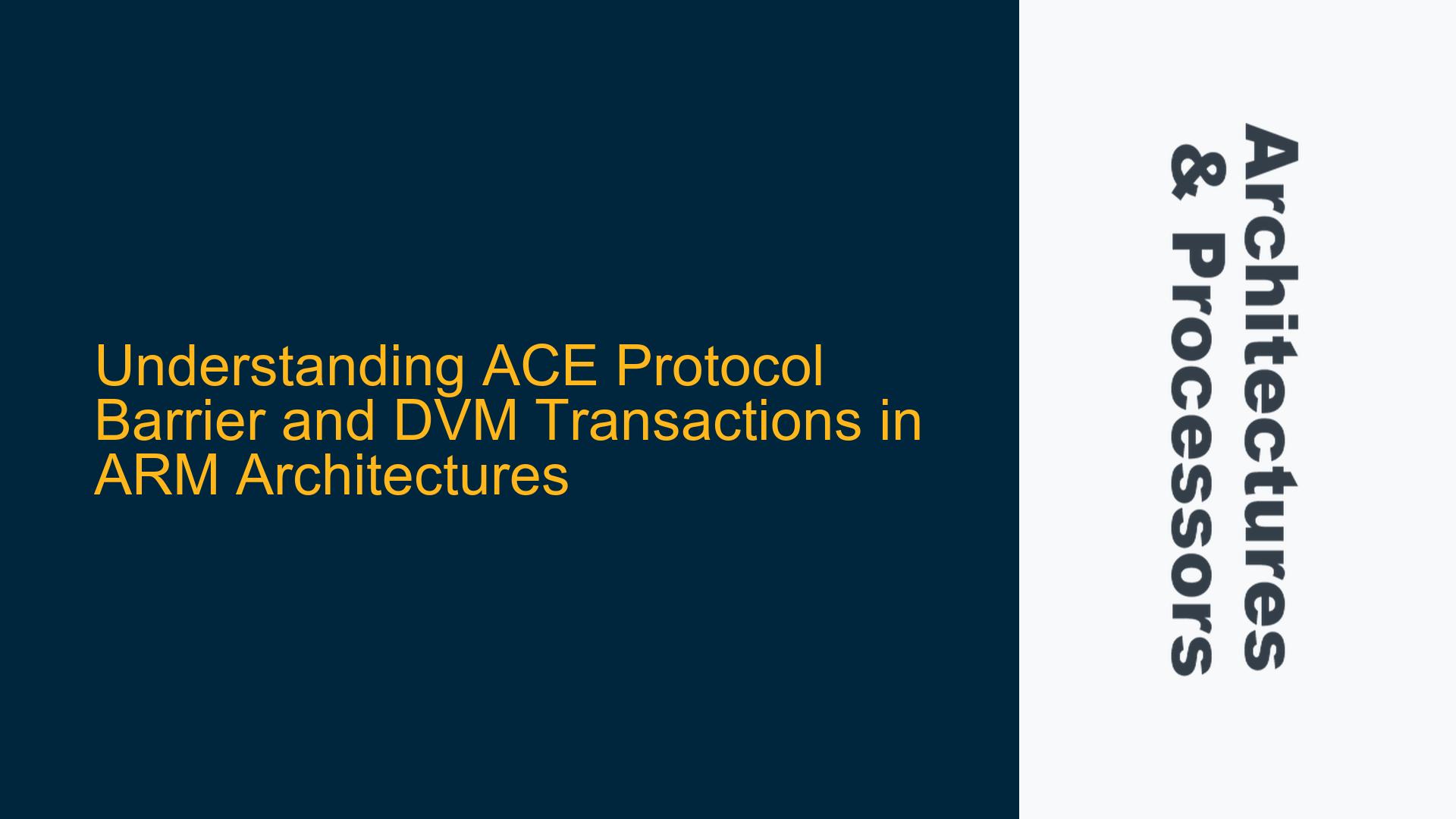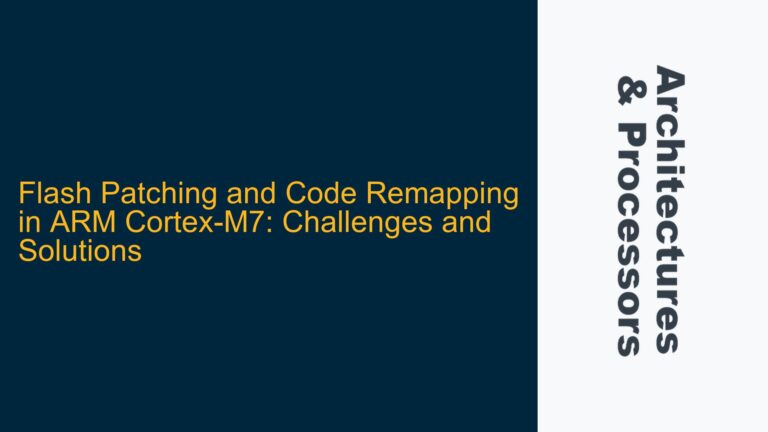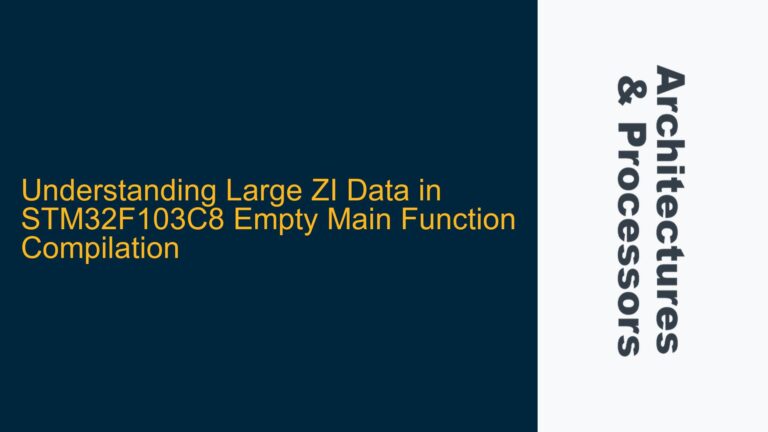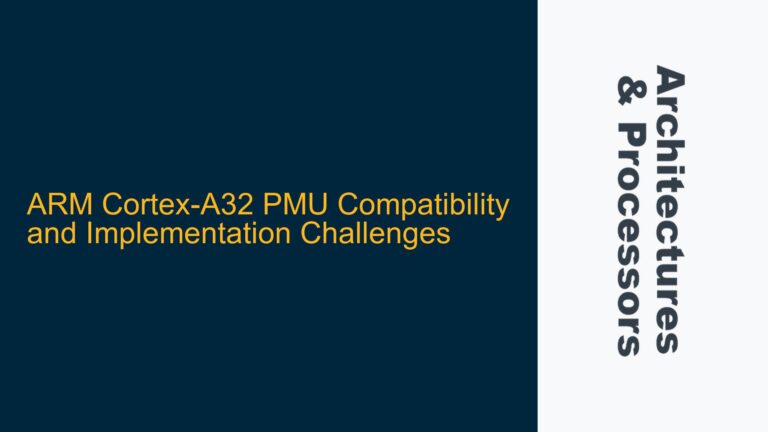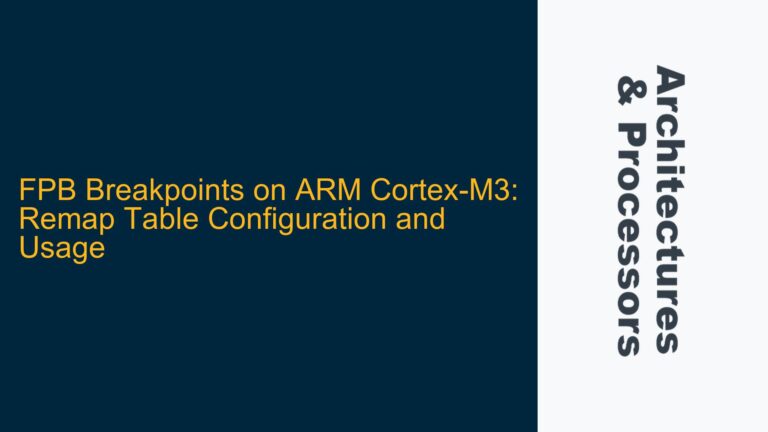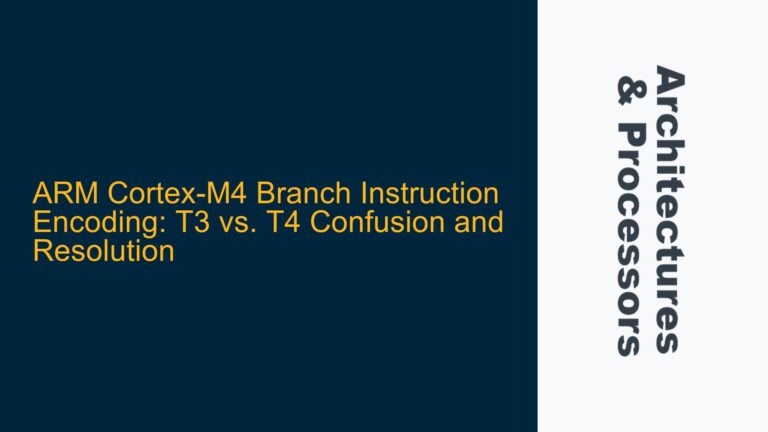ARM ACE Protocol Barrier Transactions and Their Role in Transaction Ordering and Observability
The ARM ACE (AXI Coherency Extensions) protocol is a critical component in modern ARM-based systems, particularly in multi-core and multi-manager environments where cache coherency and transaction ordering are paramount. Barrier transactions within the ACE protocol are mechanisms designed to enforce ordering and observability guarantees across transactions within a specified shareability domain. These barriers ensure that certain operations are completed and observable by other components in the system before subsequent operations are allowed to proceed.
Barrier transactions are essential in scenarios where the order of memory operations must be strictly controlled. For example, consider a multi-core system where one core writes data to a shared memory location, and another core reads that data. Without a barrier, there is no guarantee that the second core will observe the updated data immediately after the write operation due to potential delays caused by caching, buffering, or out-of-order execution. A barrier instruction ensures that the write operation is completed and the data is visible to all cores within the specified shareability domain before any subsequent operations are executed.
The shareability domain is a key concept in ARM architectures, defining the scope within which the barrier operates. ARM defines several shareability domains, including Non-shareable, Inner Shareable, and Outer Shareable. An Inner Shareable barrier, for instance, ensures that the ordering and observability guarantees are enforced across all managers within the Inner Shareable domain. This is particularly important in systems with multiple cores or clusters that share caches or memory resources.
To illustrate, consider a system with two ARM Cortex-A72 cores sharing an L2 cache. Core A performs a write operation to a memory location, and Core B needs to read that location. If Core A issues an Inner Shareable barrier after the write, it ensures that the write operation is completed and the data is visible to Core B before Core B proceeds with its read operation. This prevents Core B from reading stale data from its cache or encountering inconsistencies due to out-of-order execution.
Barrier transactions are not limited to write-read scenarios. They are also crucial in more complex operations, such as when multiple cores are updating shared data structures or when a core is modifying code that is being executed by another core. In such cases, barriers ensure that all modifications are visible and the system remains in a consistent state.
Memory Barrier Omission and Cache Invalidation Timing in ACE Protocol
One of the most common issues in systems utilizing the ACE protocol is the improper use or omission of memory barriers, leading to subtle and often difficult-to-diagnose bugs. Memory barriers are essential for enforcing the correct order of memory operations, but their omission can result in race conditions, data corruption, and inconsistent system behavior.
A typical scenario where memory barrier omission can cause issues is in multi-core systems with shared memory. Consider a situation where Core A updates a shared data structure and Core B reads from it. If Core A does not issue a barrier after the update, Core B might read stale or partially updated data, leading to incorrect program behavior. This is particularly problematic in real-time systems where timing is critical, and even small delays can have significant consequences.
Another issue related to memory barriers is the timing of cache invalidation. In ARM architectures, caches are used to improve performance by storing frequently accessed data closer to the processor. However, when data is modified, the corresponding cache entries must be invalidated to ensure that the updated data is fetched from memory. The timing of cache invalidation is crucial, and improper timing can lead to inconsistencies.
For example, if a core modifies a memory location and immediately invalidates the corresponding cache entry without issuing a barrier, another core might still access the stale data from its cache. This is because the invalidation operation might not have propagated through the system yet, and the second core might not be aware of the update. To prevent this, a barrier must be issued after the cache invalidation to ensure that the invalidation is complete and the updated data is visible to all cores.
In addition to memory barriers, the ACE protocol also includes DVM (Distributed Virtual Memory) transactions, which are used to maintain coherency for data structures other than data caches, such as instruction caches, TLBs (Translation Lookaside Buffers), and branch predictors. DVM transactions are essential in systems where multiple cores share page tables or other memory management structures.
Consider a scenario where two cores share the same page tables, and one core performs a page swap. If the second core is not informed of the page swap, it might continue to use a stale TLB entry, leading to incorrect memory accesses or even system crashes. DVM transactions, such as TLB maintenance instructions, ensure that the second core’s TLB is updated with the new page table entry, maintaining system coherency.
Implementing Data Synchronization Barriers and Cache Management in ACE Systems
To address the issues related to memory barrier omission and cache invalidation timing, it is essential to implement proper data synchronization barriers and cache management techniques in ACE systems. These techniques ensure that memory operations are correctly ordered and that cache coherency is maintained across the system.
Data synchronization barriers (DSBs) are a type of memory barrier that ensures all memory operations before the barrier are completed before any operations after the barrier are executed. DSBs are particularly useful in scenarios where strict ordering is required, such as when updating shared data structures or modifying code that is being executed by another core.
For example, consider a system where Core A updates a shared data structure and Core B reads from it. To ensure that Core B observes the updated data, Core A must issue a DSB after the update. This ensures that the update is completed and the data is visible to Core B before Core B proceeds with its read operation. Without the DSB, Core B might read stale data, leading to incorrect program behavior.
In addition to DSBs, cache management techniques such as cache invalidation and cleaning are essential for maintaining cache coherency. Cache invalidation ensures that stale data is removed from the cache, while cache cleaning ensures that modified data is written back to memory. These operations must be performed at the correct time and in the correct order to prevent inconsistencies.
For example, consider a scenario where Core A modifies a memory location and Core B needs to read the updated data. Core A must first issue a cache clean operation to ensure that the modified data is written back to memory. After the clean operation, Core A must issue a DSB to ensure that the clean operation is completed. Finally, Core B must issue a cache invalidate operation to ensure that it fetches the updated data from memory rather than using stale data from its cache.
In systems where multiple cores share page tables or other memory management structures, DVM transactions such as TLB maintenance instructions are essential for maintaining coherency. These instructions ensure that all cores are aware of changes to the memory management structures and that their TLBs are updated accordingly.
For example, consider a system where Core A performs a page swap and Core B needs to access the new page. Core A must issue a TLB maintenance instruction to ensure that Core B’s TLB is updated with the new page table entry. After issuing the TLB maintenance instruction, Core A must issue a DSB to ensure that the instruction is completed and the TLB update is visible to Core B. Without the DSB, Core B might continue to use a stale TLB entry, leading to incorrect memory accesses.
In conclusion, the proper implementation of data synchronization barriers and cache management techniques is essential for maintaining system coherency and ensuring correct program behavior in ACE systems. By understanding the role of barriers and DVM transactions, and by implementing them correctly, developers can avoid subtle and difficult-to-diagnose bugs and ensure that their systems operate reliably and efficiently.
